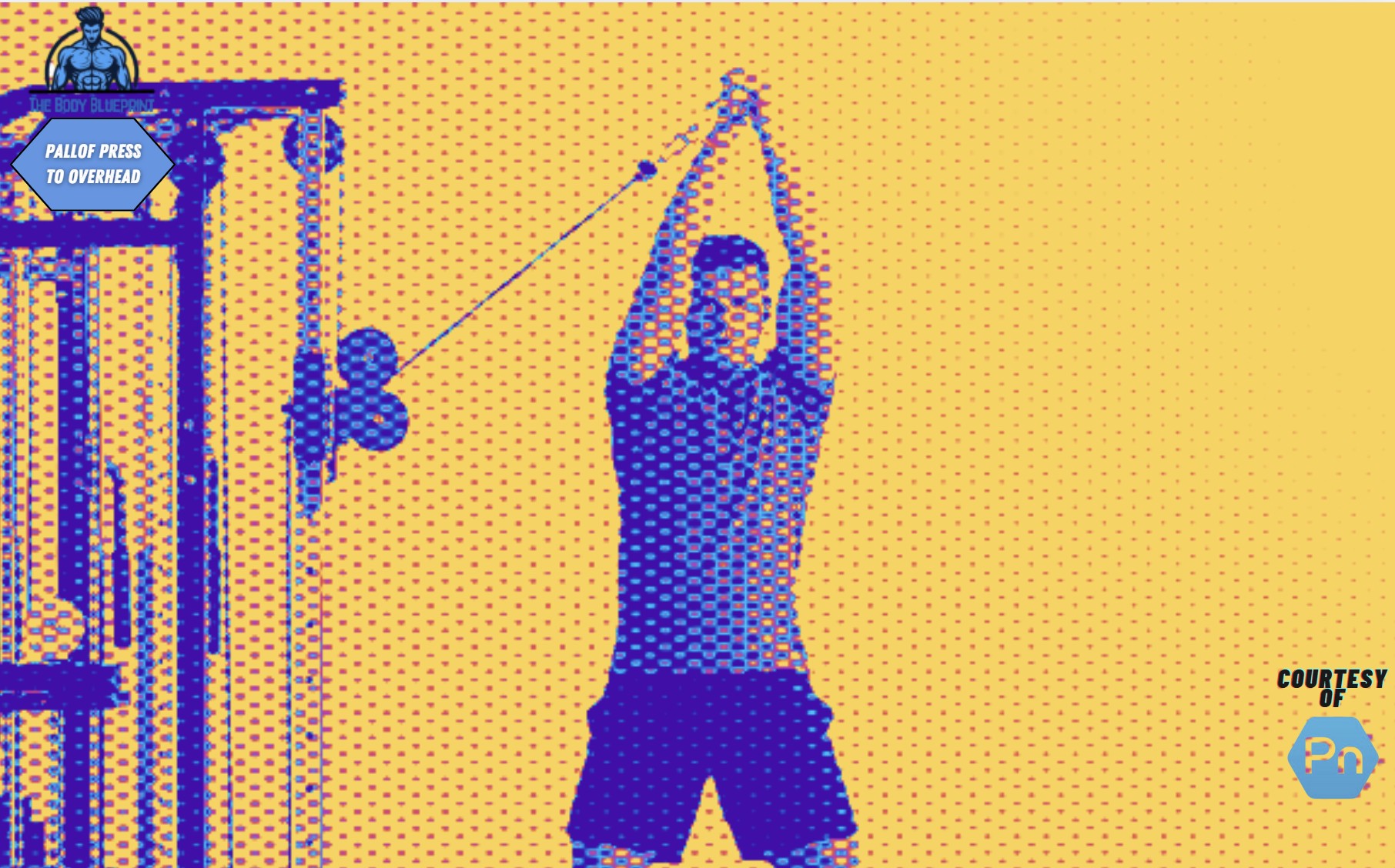If you’re ready to take your core training up a notch while building stability that transfers directly to your heavy lifts, the Pallof Press to Overhead should be on your radar. This isn’t your typical crunches-on-a-yoga-mat drill. It’s a powerhouse move that challenges your body in ways you didn’t know it needed. Let’s dive into the mechanics, benefits, and how to own this exercise like a boss.
What Is the Pallof Press to Overhead?
The Pallof Press to Overhead is a dynamic core stability exercise that combines anti-rotation with overhead movement. It forces your core, shoulders, and hips to work together to resist unwanted motion while moving a load in a controlled manner. Think of it as your secret weapon for better lifts, bulletproof shoulders, and a rock-solid core.
| Key Points | Details |
|---|---|
| Primary Focus | Core stability, shoulder mobility |
| Muscles Worked | Obliques, transverse abdominis, deltoids, glutes |
| Required Equipment | Resistance band or cable machine |
Why Should You Do the Pallof Press to Overhead?
This isn’t just another Instagram-worthy exercise. The Pallof Press to Overhead offers functional strength that translates to real-world performance.
- Build Core Stability: Stabilize your spine under load and prevent energy leaks during heavy lifts.
- Enhance Shoulder Mobility: Improve your overhead range of motion without overloading the joint.
- Transfer to Sports and Lifts: Boost your balance and coordination for squats, deadlifts, and even combat sports.
Performing the Pallof Press to Overhead (Step-by-Step)
1. Set Up Your Anchor
- Use a cable machine or resistance band anchored at chest height.
- Stand perpendicular to the anchor, holding the handle with both hands.
2. Engage Your Core
- Step away from the anchor to create tension in the band.
- Stand tall with your feet shoulder-width apart and soften your knees.
3. Execute the Move
- Press the handle straight out from your chest, resisting rotation.
- Slowly raise your arms overhead while maintaining alignment.
- Lower back to chest level with control and repeat.
| Tip: Brace like someone’s about to punch you in the gut—that’s how engaged your core should feel. |
Common Mistakes to Avoid
| Mistake | Why It’s a Problem | How to Fix It |
|---|---|---|
| Letting your hips rotate | Reduces the anti-rotation benefit | Lock your hips and engage glutes |
| Arching your lower back | Puts strain on your lumbar spine | Keep your ribs down and pelvis neutral |
| Using too much resistance | Compromises form and core engagement | Start lighter and focus on control |
Variations of the Pallof Press to Overhead
1. Half-Kneeling Pallof Press to Overhead
- Perform the exercise in a half-kneeling position to emphasize hip stability.
2. Unilateral Overhead Press
- After pressing the band out, raise one arm overhead instead of both.
3. Pallof Press with Rotation
- Add a controlled rotation at the end for extra oblique activation.
Incorporating the Pallof Press to Overhead into Your Routine
This move is best placed in your warm-up or as a core accessory on strength days. Aim for 3 sets of 8–12 reps per side, using a moderate resistance band or cable setting.
Table: When to Use the Pallof Press to Overhead
| Goal | Timing in Routine |
|---|---|
| Improve stability | As a warm-up before heavy lifts |
| Rehab shoulder issues | During recovery sessions |
| Boost core endurance | As a finisher or accessory move |
FAQs About the Pallof Press to Overhead
Can beginners do this exercise?
Absolutely. Start with a lighter resistance and focus on nailing your form. This move is scalable for any fitness level.
What’s the best equipment for this exercise?
A resistance band is ideal for beginners, while a cable machine offers more consistent tension for advanced lifters.
How do I know if I’m doing it right?
If your core is burning (in a good way) and you’re not compensating with your lower back or hips, you’re doing it right.
Final Thoughts
The Pallof Press to Overhead is a no-frills, results-driven exercise that trains your body to stay strong and steady under pressure. Whether you’re chasing PRs or just want a core that can take a punch, this move delivers the goods. So, next time you hit the gym, grab that band or cable and show your core who’s boss.
Now get after it!

